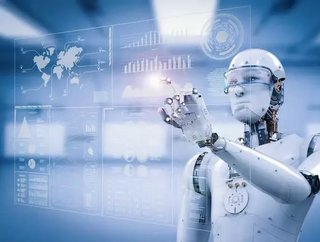Accenture: human and AI, the future of business growth

Technology magazine takes a look at the current business landscape and how artificial intelligence can be used to innovate, grow and maximise profits.
Referred to as the ‘post digital era’ by Accenture the current business landscape consists of a league of 21st century trailblazing enterprises that are successfully leveraging artificial intelligence (AI) and robotics.
Whilst there is an increase in businesses realising the business value of AI, Karthik Venkataraman, Head of AI, Data and Intelligent Automation for Accenture in Africa has seen that “most have only implemented it in certain areas of their business and our understanding of it remains limited.”
“So, as our knowledge of AI matures in this post-digital world, we foresee that businesses will move beyond deploying AI in pockets, to integrating it with their very strategic and operational DNA, to unlock their full potential and gain a competitive advantage.”
Three board level discussions relating to the adoption of AI
What are the possibilities and limitations of AI
Venkataraman explains that businesses who have typically derived optimal value from AI are those that are digital by design. However for others the use of AI on an enterprise level remains an aspiration.
“AI and advanced analytics are increasingly recognised as key pillars in the digital strategy of organisations. The use of AI in pockets within the organisation is important as far as demonstrating internal capability and gaining incremental benefits go, but to get ahead of the increasing disruption and competition in the times we find ourselves in, businesses will have to rapidly increase their knowledge on AI, and make AI capability one of the key cornerstones that their businesses are built on.”
What is the role of data in AI
Data - the foundation of AI and machine learning systems. As a result businesses will have to use the right technology and techniques to ensure they gather the right data, have the right platforms and the right quantity.
“With gathering data though, comes the huge responsibility of data governance and security. Businesses must ensure they have up to date policies and processes in place to govern how their data is collected, used and shared, across the entire organisation and they must be completely transparent about the way they collect, use and share their data – all with a significant degree of automation to minimise human biases and errors.”
SEE ALSO:
The role of humans in AI
When it comes to achieving the strategic and operational goals and objectives of a business, Venkataraman explains that humans will have critical roles to fulfil:
• Humans will need to train AI systems with the right data
• Humans will need to be able to explain how AI arrives at particular decisions
• Humans will need to monitor whether AI fulfils the purpose it was designed for
Unleashing ultimate potential
“Ultimately, people will always remain the greatest asset of any business as they are after all the ones who create the business’ vision, and are able to see that vision through, right through from conceptualisation to execution,” says Venkataraman.
In a ‘post digital era’ business should continue to leverage AI for executing the mundane and repetitive tasks to free up people’s time, while effectively utilising the extra time.
To derive the full benefit from AI investments, Venkataraman further explains that businesses need to expand their AI capability beyond the automation of parts of their workflow. “Instead, they need to make it a generative part of the process that proactively enables collaboration between man and machine and that supports and drives tangible business results.”
Robotics
“Top businesses worldwide are fast debunking the myth that robots are designed for replacing humans, by proving that robots are indispensable for protecting humans by fulfilling “dirty and dangerous” tasks,” says Venkataraman.
With robotics evolving into no longer being contained to the factory floor, the tasks completed by robots range from collecting and packaging radio-active waste and lifting heavy objects, to working in toxic, contaminated environments by Autonomous vehicles, delivery drones, and other robot-driven machines, which are poised to accelerate with the adoption of 5G.
- OpenText’s Muhi Majzoub: Engineering Platform Growth with AIEnterprise IT
- OpenText CEO Roundtable: The Future of Safe Enterprise AIDigital Transformation
- OpenText AI: Empowering Businesses in Information ManagementDigital Transformation
- Microsoft in Japan: $2.9bn Investment to Boost AI & CloudCloud & Cybersecurity






